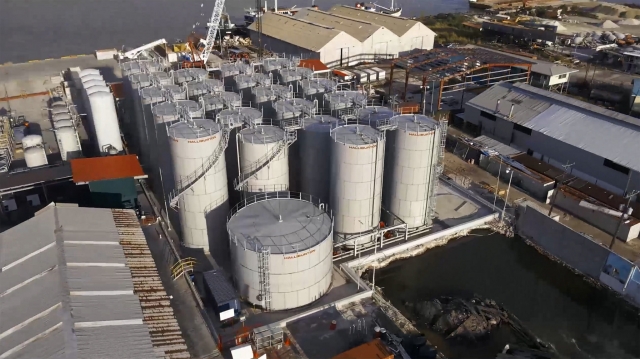In the vast landscape of industrial storage solutions, few components stand as essential and versatile as dry bulk storage tanks. These robust structures serve as the backbone of various industries, providing safe and efficient storage for a wide range of bulk materials. From grains and cement to chemicals and minerals, dry bulk storage tanks play a pivotal role in ensuring the seamless flow of goods across supply chains worldwide.
Understanding Dry Bulk Storage Tanks
Dry bulk storage tanks, also known as silos or bins, are specially designed structures used for storing bulk materials in powder, granular, or free-flowing form. Unlike liquid storage tanks, which hold fluids, dry bulk storage tanks are tailored to handle solid materials in large quantities.
These tanks come in various shapes, sizes, and materials, each suited for specific applications and storage requirements. Common designs include cylindrical, rectangular, and conical silos, with capacities ranging from a few hundred to several thousand tons. Additionally, manufacturers offer customization options to meet the unique needs of different industries and materials.
Applications Across Industries
The versatility of dry bulk storage tanks makes them indispensable across a wide spectrum of industries:
-
Agriculture: In agriculture, silos are used for storing grains, seeds, and animal feed. Farmers rely on these tanks to preserve harvests and ensure a steady supply of feed for livestock, enhancing food security and profitability.
-
Construction: The construction industry utilizes dry bulk storage tanks for storing cement, sand, gravel, and other construction materials. Silos play a crucial role in ensuring a continuous supply of raw materials for construction projects, contributing to efficiency and cost-effectiveness.
-
Chemicals: Chemical manufacturers rely on specialized silos to store bulk chemicals safely. These tanks are designed with features such as corrosion resistance and containment systems to prevent leaks and ensure compliance with strict safety regulations.
-
Mining: In the mining sector, dry bulk storage tanks are used for storing minerals, ores, and aggregates. These tanks facilitate efficient material handling processes, enabling mining operations to operate smoothly and meet production targets.
-
Food and Beverage: From flour and sugar to salt and coffee beans, the food and beverage industry relies on dry bulk storage tanks to store ingredients and raw materials. Hygienic design and food-grade materials ensure product integrity and compliance with food safety standards.
Key Features and Considerations
When selecting dry bulk storage tanks for a specific application, several factors must be considered:
-
Material Compatibility: Different materials require different storage conditions. It's essential to choose a tank material that is compatible with the stored material to prevent contamination or degradation.
-
Capacity and Size: The tank's capacity should align with the storage requirements, considering factors such as material volume, throughput, and space constraints.
-
Structural Integrity: High-quality construction and robust design are crucial for ensuring the structural integrity and longevity of dry bulk storage tanks, especially when dealing with heavy or abrasive materials.
-
Handling and Discharge: Efficient material handling and discharge systems, such as pneumatic conveyors or augers, are essential for seamless operations and preventing material bridging or clogging.
-
Safety and Compliance: Compliance with safety regulations and industry standards is paramount to ensure the safe storage and handling of bulk materials. Tanks should be equipped with safety features such as pressure relief valves, level sensors, and access platforms for maintenance and inspection.
Innovations and Advancements
The field of dry bulk storage tanks continues to evolve, driven by technological advancements and industry demands. Recent innovations include:
-
Advanced Monitoring Systems: IoT-enabled sensors and monitoring systems provide real-time data on storage conditions, allowing for proactive maintenance and optimized inventory management.
-
Automated Handling Solutions: Automated loading and unloading systems streamline material handling processes, reducing labor costs and improving operational efficiency.
-
Environmentally Friendly Designs: Eco-friendly materials and design features, such as solar-powered ventilation systems and rainwater harvesting, minimize the environmental impact of dry bulk storage operations.
-
Modular and Portable Solutions: Modular tank designs and portable storage solutions offer flexibility and scalability, allowing for easy relocation or expansion as business needs evolve.
Conclusion
In conclusion, while dry bulk storage tanks are vital for diverse industries, the importance of potable water tanks cannot be overstated. These tanks ensure the safe storage and distribution of clean drinking water, safeguarding public health and supporting essential services worldwide. As communities grapple with water scarcity and quality challenges, investing in reliable potable water storage solutions becomes imperative. By prioritizing innovation, sustainability, and compliance, the industry can meet the growing demand for safe and accessible water resources, promoting health, prosperity, and resilience for generations to come. Potable water tanks stand as a cornerstone of water management, embodying the essence of safety and sustainability.






